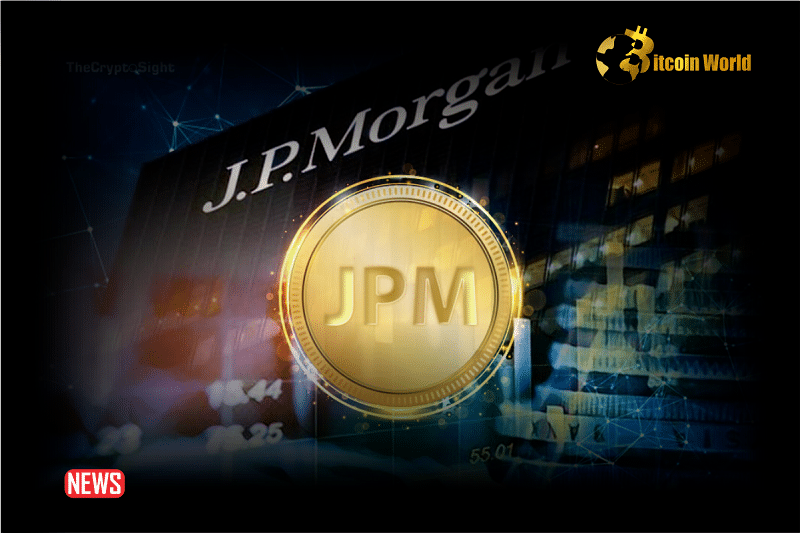In a significant development in finance and technology, JPMorgan Chase & Co. is setting its sights on a massive expansion of its blockchain-based payment system using the JPM Coin. The banking giant’s digital token is poised to manage an impressive $10 billion in daily transactions within the next one to two years. The ambitious goal was outlined by Umar Farooq, the bank’s Global Head of Financial Institution Payments, signaling a major leap in the adoption of blockchain technology in mainstream banking.
scaling up JPMorgan Coin’s transactional capacity
Currently, JPM Coin processes approximately $1 billion in transactions daily. However, Farooq expressed optimism about a substantial increase in the volume, projecting a growth of five to ten times over the next year. The projection was shared during an interview with Bloomberg Television’s Haslinda Amin at the Singapore FinTech Festival.
JPM Coin operates as a digital token facilitating dollar and euro-denominated payments for JPMorgan’s wholesale clients through a private blockchain network. Despite being one of the few operational blockchain applications by a major bank, the current volume of transactions via JPM Coin is relatively small compared to the daily $10 trillion in US dollar transactions handled by JPMorgan.
Blockchain technology advocates highlight its potential to enable instantaneous payments at a lower cost compared to traditional technologies. However, the scalability of digital ledgers, especially on a scale comparable to conventional payment networks, remains a subject of ongoing exploration and development.
Innovations and applications of JPM coin
JPMorgan is not just expanding the transactional capacity of JPM Coin but also enhancing its functionality. The bank’s blockchain-powered payment system, Onyx, has introduced a new programmable payments feature for JPM Coin. This innovative feature allows clients to automate payments, enabling the system to manage financial obligations such as overdue payments and margin calls autonomously.
Naveen Mallela, the global head of coin systems at Onyx, highlighted a practical application of the technology. He revealed that Siemens, the multinational conglomerate headquartered in Germany, recently used JPMorgan’s JPM Coin system to set up its account for transfers. The application addresses potential funding gaps by allowing clients to program their accounts with specific conditions to facilitate fund movements automatically.
The introduction of programmability in digital currencies and tokenized money is a significant milestone. It paves the way for a dynamic and event-driven financial infrastructure, which is crucial for achieving real-time, automated, and programmable treasury operations.
Implications for the future of banking and payments
JPMorgan’s aggressive push in scaling up JPM Coin’s transactional capacity and its innovative applications in programmable payments represent a significant shift in the financial services landscape. The move demonstrates the growing acceptance and integration of blockchain technology in the banking sector and sets a precedent for other financial institutions to follow.
The potential of blockchain to revolutionize the banking industry lies in its ability to facilitate faster, more secure, and cost-effective transactions. As traditional banks like JPMorgan embrace these technologies, they open up new avenues for financial transactions that could redefine how businesses and individuals manage their financial operations.
Moreover, the success of JPM Coin in handling a larger volume of transactions and its application in programmable payments could accelerate the adoption of digital currencies and blockchain technology across various sectors. It could lead to more innovative solutions and services, further integrating digital currencies into the global financial system.
Conclusion
JPMorgan’s expansion of JPM Coin’s capabilities and transactional volume is a clear indicator of the growing role of blockchain technology in the financial sector. As the bank moves forward with its plans, it will likely influence the broader adoption and development of digital currencies and blockchain technology, potentially transforming the landscape of banking and


